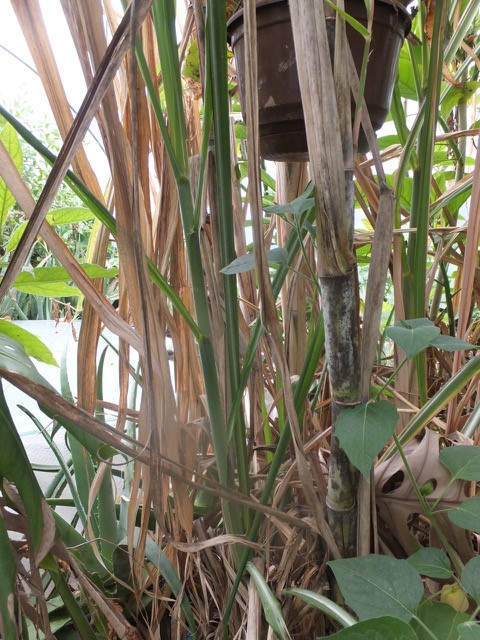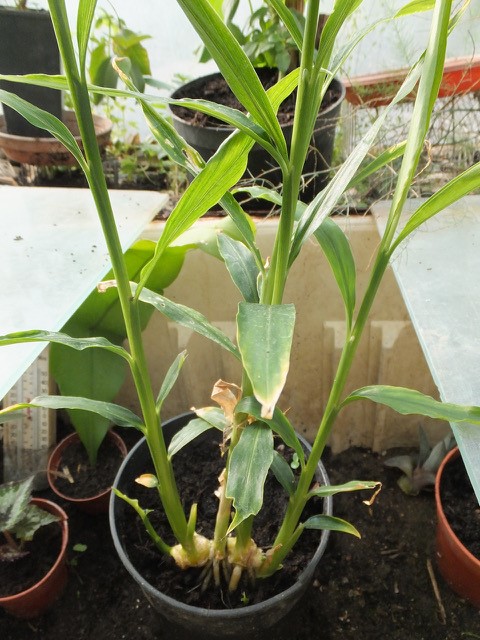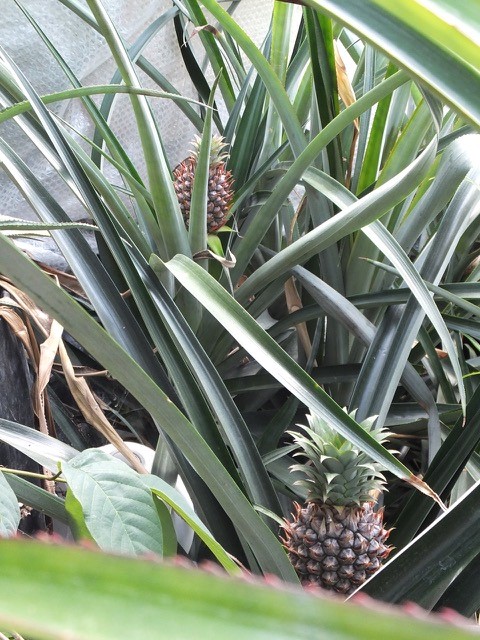
Some interesting and useful glasshouse plants can be grown without ever finding any seeds first. Although most plants grow from seed using these can give variable results. When we want exactly the same characteristics as the parent we use vegetative propagation. That is we grow on a small bit of the original and not a seed. This can be simpler, and is often faster.
Sugar cane for example, now this sets flowers and seed, much like Pampas grass. However world wide it’s invariably grown by setting a piece of cane in damp soil. You can do likewise with some cane sold in ethnic shops. A piece in damp compost in warmth will sprout from buds at the joints. These can grow fast, and with good conditions (hot, wet, rich) making 3-4m tall specimens in months. Very impressive, these can be planted outdoors in summer as ‘ornamental grass’ displays. Handy as it’s a bit cramped in smaller glasshouses.

Lemon grass is remarkably easy, it’s a weed of tropical ditches so every piece will root in warm wet compost and then soon makes attractive 1-1.5m specimens.
Ginger needs warmth all through the growing season to flourish but is attractive and valuable. Plant sections of fresh root carrying a greenish bud in warm compost to produce the 0.5-1m tall mini-sweet corn like stems. By late summer the bottom of the shoots swell. These can be taken to crystallise as stem ginger. Left to mature these harden and fuse to become a new hand of root ginger. Lift and dry this when the shoots wither and break off.

Turmeric and the similar Galangal are related to ginger and have even more valuable rhizomes. Grown in the same manner as ginger these have different shaped leaves and much smaller roots.
Pineapples are exceptionally rewarding, though slow. You slice a healthy crown from a good fruit and dry the cut surface for a few days before potting it in the warm. You religiously feed, water and pot up the yucca like each summer, and just keep it warm each winter. Then, in about three years, it WILL flower and produce you a pineapple. If you did well this will be huge, if not so good then it will be tiny. But either way you’ll have a new crown on top for another go. What more could you ask?


